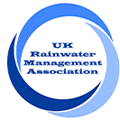Can Rainwater Harvesting supply…
Toilets
Rainwater Harvesting can provide a sustainable water supply for toilet and urinal flushing. The number of toilets and urinals which are reliant upon a water supply from the rainwater harvesting system will be considered when sizing the system to ensure the total demand can be covered. It is recommended that rainwater harvesting systems supplying toilets should be properly maintained by a specialist, like Stormsaver, to reduce the likelihood of disruption from unexpected downtime.
Where a rainwater harvesting system supplies multiple toilets, it is also recommended that one of the toilets is reliant solely on a mains water supply to prevent the building from closure in the event of system downtime.
Irrigation and Gardening
A popular use of reclaimed rainwater from rainwater harvesting systems is for irrigation and garden watering. Potable water quality is not needed for this activity, therefore reclaimed rainwater is ideal. When the system is being sized the total number of outlets and usage period will be considered to ensure there is enough supply. Rainwater harvesting systems are sized based on 18 days storage capacity to ensure a sustainable water supply can be used during dry spells.
For prolonged periods of droughts an automatic mains water top up will ensure a constant water supply.
Manufacturing
Rainwater Harvesting can be useful for many non-potable manufacturing processes. Businesses with a large water consumption can benefit from a rainwater harvesting system to improve water efficiency and reduce water bills. It is recommended that rainwater harvesting systems which provide a sustainable water supply for manufacturing should include ultraviolet filtration with an automatic backwash system. These additional filtration devices will ensure high levels of water quality.
Rainwater Harvesting Systems have been combined with reverse osmosis systems for large-scale manufacturing processes.
Construction
Portable Rainwater Harvesting Systems are available to supply sustainable water supplies for dust suppression. StormStation Rainwater Harvesting Systems can supply site welfare cabins with water supply for toilet flushing. StormStation can be easily moved upon completion of the construction project and transported to the next construction site. Learn more about StormStation here.
Showers
Rainwater Harvesting Systems provide a non-potable water supply which is not suitable for human consumption, therefore rainwater harvesting systems should not be connected to showers or baths under any circumstances in the UK. The British Standards enforces the ruling that rainwater harvesting systems should only be used for non-potable uses.
Drinking Water
Rainwater Harvesting Systems should not supply drinking water outlets in the UK. This is in line with the British Standard. Whilst reclaimed rainwater appears clean and clear, car fumes, avion faeces and other debris can enter the rainwater when it is collected from the roof area.








